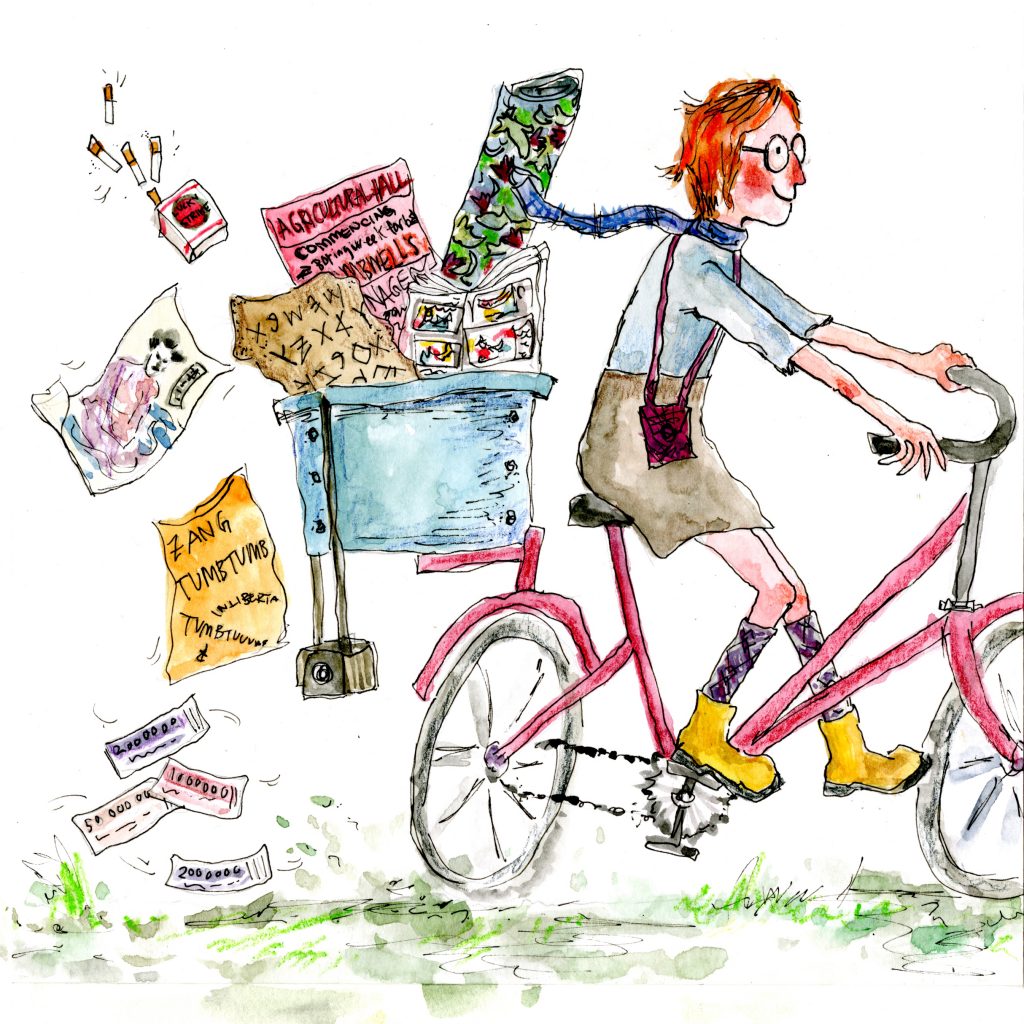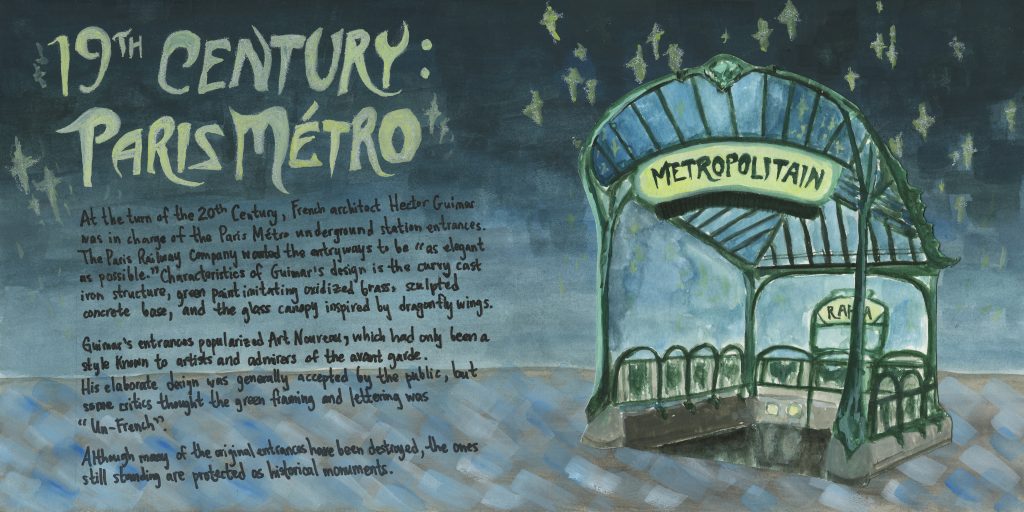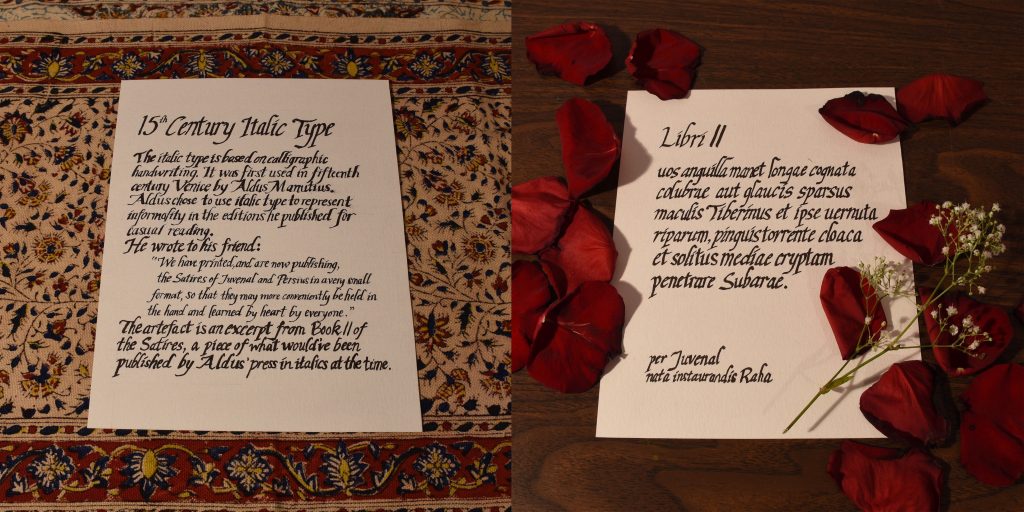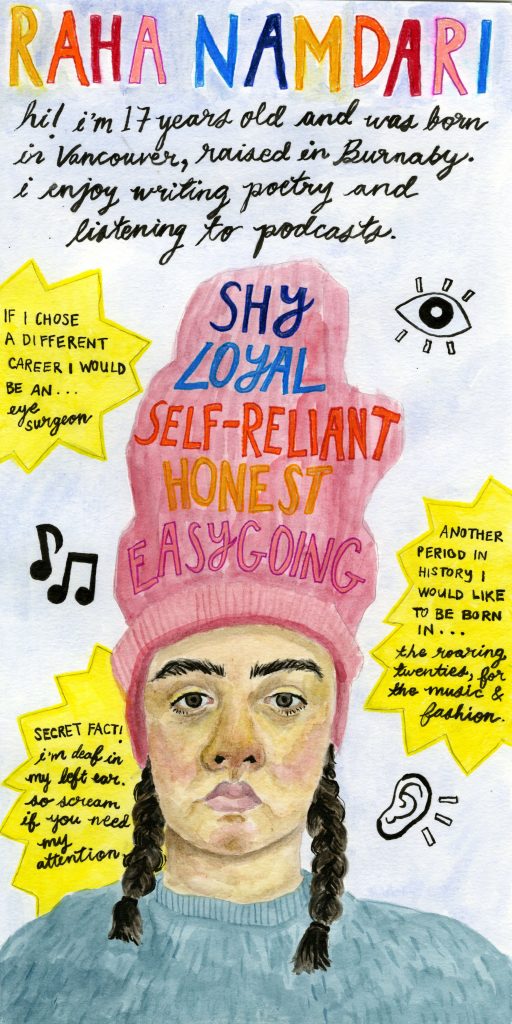
When I got assigned to do a back cover for our class book, I knew I definitely wanted to do an illustration of Judy. I feel that although the periods, places, and things we’ve learned are important, the teacher is as well. I also don’t believe I’ve seen Judy on the other IDEA book covers before so this year is the year for it to happen!!!
We see Judy cycling out of the page with her iconic yellow boots and little knit purse, bidding us farewell but also leaving behind the things she taught us. I like how I managed to smoothly integrate bits of what we learned in class by putting such objects in the rear crate. The items I chose were just things that stuck out to me during lecture and readings. I included:
- William Morris’ wallpaper
- 15th century block book
- Early writing tablet
- Jobbing printer poster
- Lucky strike cigarettes
- Ukiyo-e print
- Zang tumb tumb sound poem
- A camera
- Herbert Bayer’s banknotes
I used watercolours, watercolour pencil crayons, and ink. I wanted the style to be reminiscent of Roald Dahl book covers:

I like the loose and sketchy feel of my illustration, giving it a sense of childlike spontaneity. It’s quirky! It’s fun! I’d give myself a 9/10 for my back cover. It turned out just the way I wanted it to be. But I could’ve spiced it up more by incorporating all the typefaces we’ve learned.



